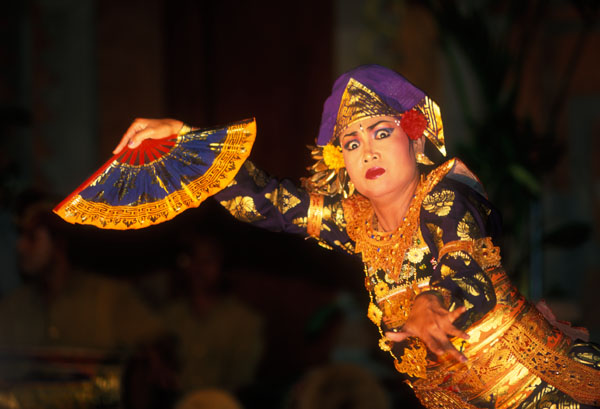Local shows and performances may be encountered in a variety of situations ranging from hotel restaurants to huge nightclubs. In warm climates some are staged outdoors, typically during or after an evening meal. Ambient light is likely to be poor so it is necessary to utilize stage lighting or direct flash. Indoor venues tend to be more organized, perhaps with fixed rows of seating, a restricted view and little opportunity to move around. Photography is again dependent upon stage lighting, direct flash or a combination of the two. The organizers of more formal shows are likely to forbid or restrict photography in order to protect copyright and increase the sales of programmes. Others may allow the use of cameras but place restrictions on flash and tripods. When positioned in allocated seating the use of a tripod is in any case impractical but a monopod may help steady the camera.

For hand-held work it is essential to use a fast film, with a speed of at least ISO 400, or the equivalent setting on a digital camera. Stage lighting usually consists of coloured spotlights concentrated on the performers, leaving other areas dimly lit or in total darkness. For close-ups of particular performers centre-weighted automatic exposures may work well. In the case of wider shots contrast will be high and exposure must be set for the brightly-lit areas, preferably using spot metering. Hold this exposure as the lens is zoomed back to include a broad field of view, otherwise the performers will be overexposed.
Focusing on moving performers in poor light can be difficult, so using the autofocus-assist illuminator function of a flashgun may be helpful. Direct flash must usually be employed because no suitable reflective surfaces are likely to be available for bounced flash techniques. However, bear in mind that flash may wash out the beauty of the theatrical lighting and hence remove the atmosphere of the show from the images. Fill-in flash is more appropriate if sufficient light is available. The speed of autofocus is also a distinct advantage when the performers are moving rapidly to music. Use a compromise of shutter speed and aperture likely to stop the action while allowing sufficient depth of field to tolerate small focusing errors. Another approach, if the use of tripods is permitted, is to set a slow shutter speed and allow movement to blur. This produces attractively dynamic images although the results are more difficult to predict. The key is to try a variety of shutter speeds.






